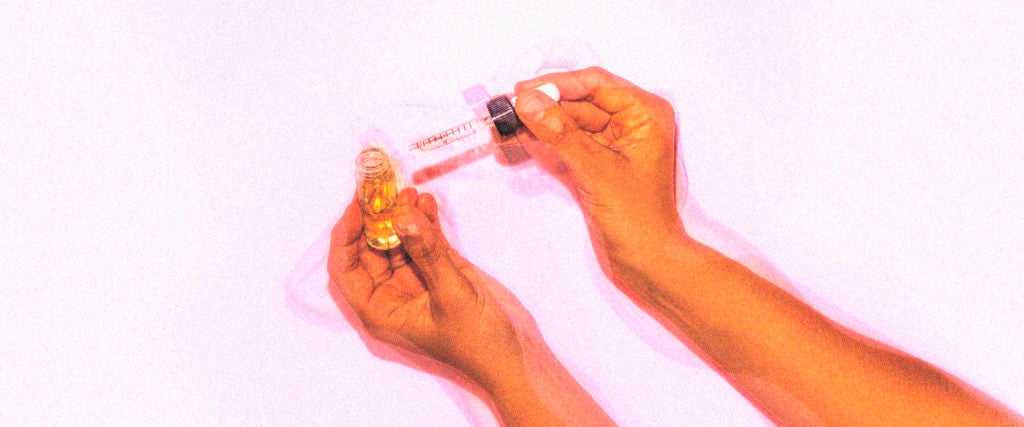Quick math problem for you: If you take $20 worth of LSD — about the price of two tabs, the standard dose for a trip — you’re on drugs for the next 8 to 12 hours. Now compare that to smoking $20 worth of weed. No matter how excellent that particular strain is, it’s pretty unlikely you’ll still be high 8 or 12 hours later. I guess what I’m saying is, in terms of value per hour spent high, acid is a lot of bang for your buck.
LSD also seems like a great deal for a drug when you factor in that 1) it has to be synthesized by a chemist rather than plucked from the ground; and 2) it’s still extremely illegal.
But what exactly makes it so cheap?
LSD does need to be synthesized by a chemist, explains Allison Feduccia, a neuropharmacologist and co-founder of Psychedelic.Support, but that doesn’t necessarily mean it’s a hard compound to create. “LSD is a more complex molecule compared to psilocybin, but synthetic processes for both have been known for decades,” Feduccia explains. Along those lines, you easily can find detailed breakdowns on how LSD is synthesized online.
Still, as anyone who’s ever grown backyard dirt weed or homebrewed musky bathtub beer will tell you, there’s a difference between making something and making it well. “Because it’s so taboo, it’s become very difficult to get — not only for people on the street or whatever, but for science, too,” says Amanda Feilding, the founder and executive director of the Beckley Foundation. She would know: Feilding, aka “the Countess of Psychedelic Science,” is famous for drilling a hole in her head — a procedure called trepanation — and advocating for consciousness-expanding practices, including the use of psychedelic drugs. (In the 1960s, she said, “I used to call [LSD] the ‘psycho-vitamin.’”) In 1998, she founded the aforementioned Beckley Foundation, which focuses on “global drug policy reform and scientific research into psychoactive substances,” per their website. Some of this research is around LSD, but it’s limited by, among other things, the availability of high-quality acid.
“To do human science, you need GMP — good medical practice — and it’s virtually impossible,” Feilding says. “I’m actually setting up a joint venture with the oldest pharmaceutical company in India to try to make the purest GMP psychedelics that can be provided as inexpensively as possible for research and medicine. Because the problems of finding the compound does block research.”
Feilding and the Beckley Foundation are, of course, limited to above-board partnerships and attaining the highest quality LSD available; recreational LSD users obviously aren’t held to the same medical or scientific standards. So while Feilding may have a difficult time getting the good shit, as long as it’s easy to make, someone with the right lab equipment is going to synthesize it and pass it along to be sold to blacklight-poster owners everywhere.
Yet, there has to be something besides an Elle Woods “What, like it’s hard?” attitude toward its manufacture that’s keeping down the price of LSD.
One possible answer is that a little goes a long way. “LSD doses are very small compared to other psychedelics — a tiny drop can shift one’s sensory perceptions for many hours,” explains Feduccia. And if a single drop is that powerful, moving considerable quantities of acid can be done fairly simply and with less risk of detection than trying to move a few ounces of weed or a Ziploc bag full of magic mushrooms.
Actually, that high level of potency is one of the problems researchers face when studying the effects of LSD. Because a single dose can send a patient tripping for up to 12 hours, acid is far less convenient to study than other “classical psychedelics” like DMT (about half an hour when smoked, or 4 hours in a brew like ayahuasca), or shrooms (6 to 8 hours). Per Feduccia, “New research trials are planned to look at the therapeutic potential of LSD, but in a clinical setting, psilocybin has been studied more because the 6- to 8-hour sessions fit better with a typical work day of a therapy team.”
There’s one more obvious element that differentiates LSD from many other illegal drugs as well. “It’s not addictive,” Feilding points out. “You can’t get an animal addicted to a psychedelic. We’ve tried. It doesn’t work.” Feduccia goes further, explaining, “LSD and other classical psychedelics have a lower potential for addiction because they don’t activate the dopamine reward pathway in the same way as highly addictive drugs like cocaine and nicotine. LSD and psilocybin experiences involve large shifts in consciousness. Following a psychedelic trip, people usually report they received benefit from the experience but aren’t necessarily rushing back to trip again anytime soon.”
Even if it’s a little tricky to find someone with the right lab setup to synthesize it, the age-old theory of supply (ample) and demand (not fueled by addiction) are probably what’s keeping the price of LSD relatively low despite its illegality in every state but Oregon. And with the movement to legalize shrooms continuing to grow, it’s possible LSD could see similar decriminalization — as long as enough researchers can be convinced to sober-sit someone on their 11th hour of tripping balls.

